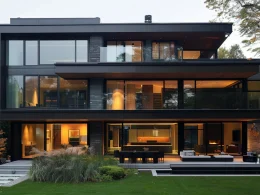Do you need a fence for your property but don’t want to spend a fortune on materials? That’s where the innovative concept of using pallets comes in.
Believe it or not, you can create a sturdy, attractive fence using recycled pallets, saving you money while being eco-friendly.
This blog post will explore various ideas and guide you through building your unique pallet fence.
From gathering the right materials to putting the wall together, you’ll discover that constructing a pallet fence is possible and a fun and rewarding DIY project.
Get ready to transform your outdoor space with a unique pallet fence showcasing your creativity and resourcefulness.
Exploration of Pallets as A Fence Material
You might be wondering if building a fence using pallets is possible. It is possible to build a fence using pallets, as pallets make great material for DIYing a fence. Pallets come in three main types:
- Wooden: These offer a natural, rustic look that can enhance your outdoor space. They are easy to work with and can be modified to fit your fence design.
- Plastic: Known for their durability, plastic pallets are resistant to weather, pests, and rot. However, their strength and resilience make modifying for personalized projects like fencing challenging.
- Metal: These pallets are incredibly strong and long-lasting, ideal for heavy-duty applications. However, they are less practical for DIY fence projects.
Each type has specific uses in various industries, but wooden pallets are the most suitable option for building a fence.
Pine is commonly used in pallets due to its softness and workability. Wooden pallets are also environmentally friendly as they are biodegradable and widely available for reuse.
Wooden pallets are also environmentally friendly as they are biodegradable and widely available for reuse.
Step-by-Step Guide to Building a Pallet Fence
Building a fence using pallets is a simple and practical DIY project that requires basic tools and skills. Follow this step-by-step guide to create your unique pallet fence.
1. Planning for Fencing
- Assessing the Space: Measure where you plan to install the fence. This will help determine the number of pallets needed and any adjustments required for a stable installation.
- Choosing the Right Kind of Pallets: Look for pallets stamped with “HT” (Heat Treated), which indicates they are safe for use. Avoid pallets marked with “MB” (Methyl Bromide), as they may contain harmful chemicals.
2. Construction of Fence Using Pallets
- Collecting Materials: In addition to the pallets, gather necessary materials such as nails, screws, hinges, and any decorative elements you wish to incorporate.
- Setting Up the Posts: Dig post holes along the fence line, ensuring they are evenly spaced and deep enough to support the fence’s height (usually about one-third the height of the post). Place the posts into the holes and secure them with concrete, ensuring they are level and plumb.
- Attaching the Pallets to the Posts: Decide whether you want the pallets to be oriented horizontally or vertically, depending on your desired look. Use screws or nails to securely fasten the pallets to the posts, ensuring they are level and aligned.
3. Customization of Pallet Fence

- Painting and Staining: Consider colors that blend seamlessly with your garden environment, such as earthy greens or natural wood tones. When painting your pallet fence, use a sprayer for uniform coverage or a brush for a more rustic, textured look.
- Adding Planters: Create a vertical garden by adding hooks or shelves to your pallet fence for hanging planters. This maximizes space and adds visual interest at eye level, making your fence a focal point in your yard.
Benefits of Using Pallets for Fences
Pallets offer a range of practical and aesthetic advantages for fencing, making them an appealing alternative to traditional fencing materials. Let’s explore the benefits in more detail.
1. Cost-effectiveness
Building a fence with pallets can lead to significant cost savings compared to using new materials.
Pallets are available from various sources, such as local businesses, warehouses, or online marketplaces.
Many companies are willing to give away their used pallets for free, as it saves them disposal costs.
2. Environmental Impact
By using wooden pallets for your fence, you are actively contributing to sustainability efforts.
Many pallets end up in landfills after their initial use, but repurposing them for fencing gives them a second life and keeps them out of the waste stream.
3. Ease of Customization for Aesthetics
One of the greatest advantages of using wooden pallets for fencing is the ease of customization.
Pallets can be easily cut, modified, and painted to suit your design preferences. Pallet fences offer a wide range of aesthetic possibilities.
They can provide privacy, define garden boundaries, or create a perimeter barrier around your property.
Summing It Up
Building a fence using pallets is a cost-effective, eco-friendly, and creative way to enhance outdoor space.
Following the step-by-step guide and considering the customization ideas and solutions to potential challenges, you can create a unique and durable pallet fence that reflects your style.
Whether you’re looking to define boundaries, increase privacy, or add a rustic charm to your yard, a pallet fence is a versatile solution that offers endless possibilities.
So, gather your materials, unleash your creativity, and embark on this rewarding DIY project. The result will be a beautiful and functional fence you can enjoy for years.
Ready to get started? Begin planning your pallet fence today and transform your outdoor space into a personalized oasis.











